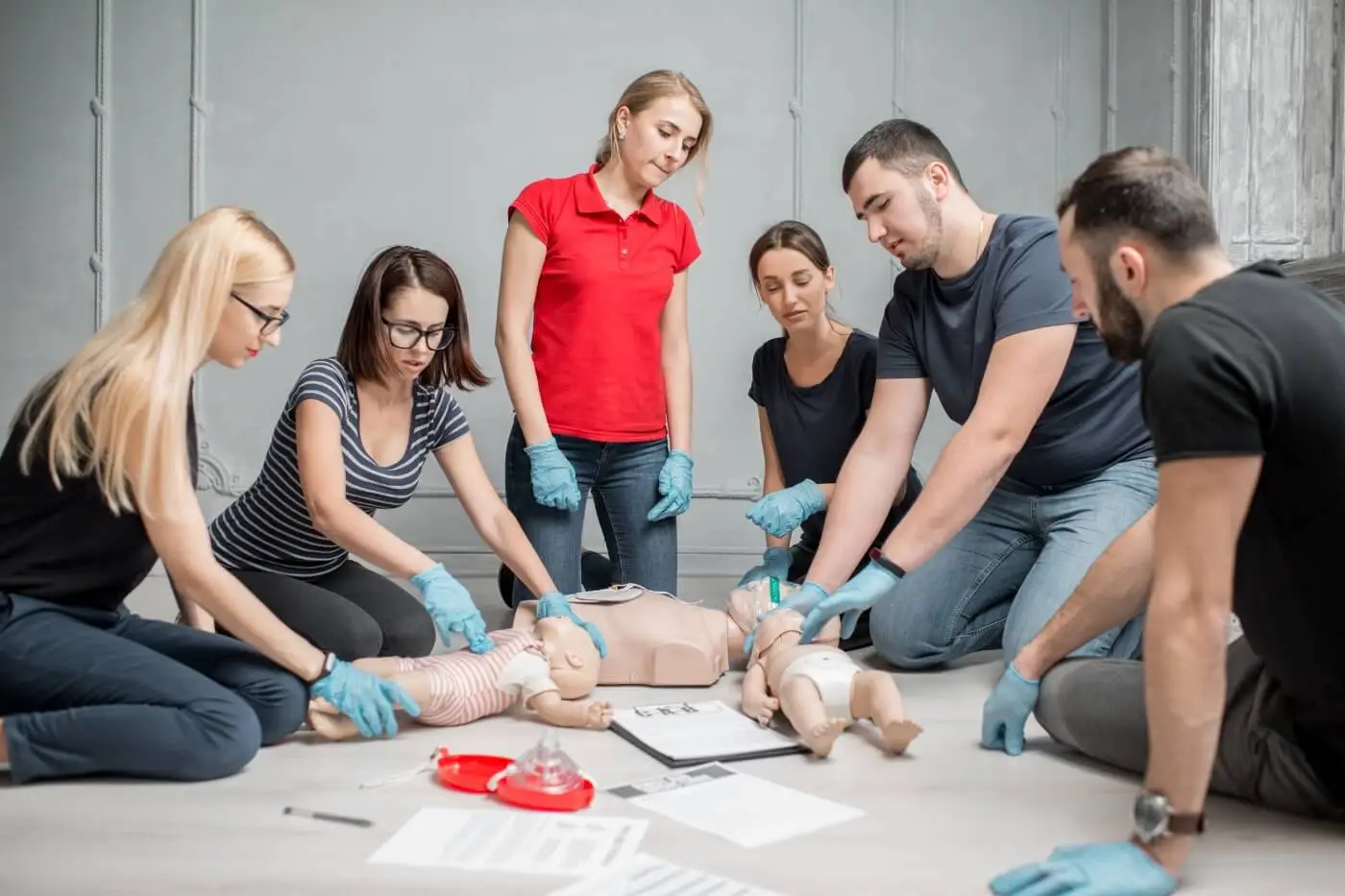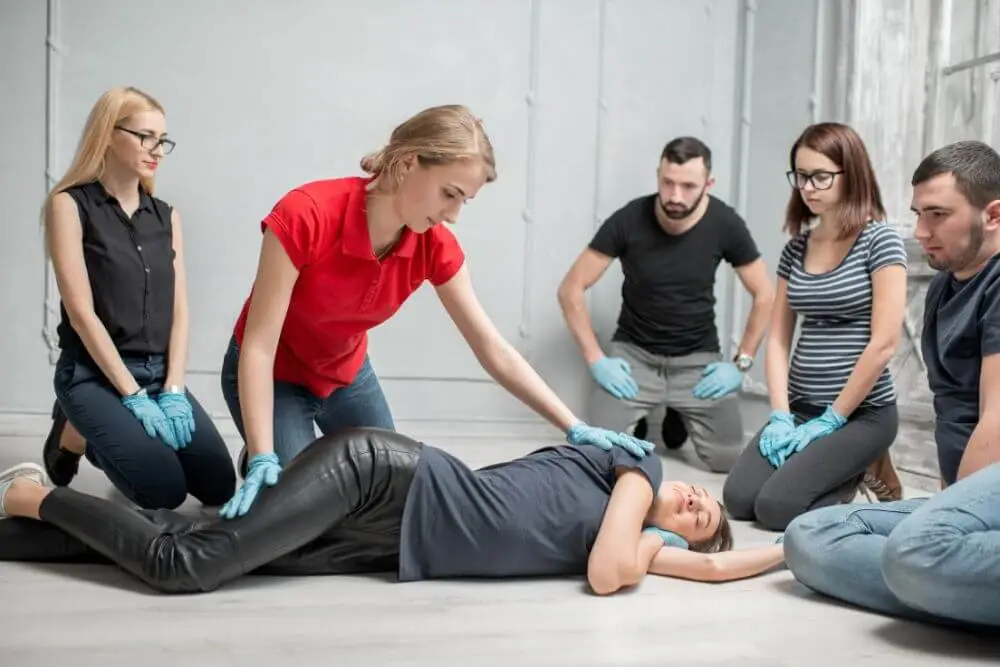Emergency First Aid, Defibrillation and CPR Level 2
This qualification has been developed specifically for those who wish to become an emergency first-aider and use a defibrillator. This international qualification would be typically delivered to learners through a 1-day training course (8 hours).
4.9 (7,439 Ratings)
Course Features
What you’ll learn
This qualification has been developed specifically for those who wish to become an emergency first-aider and use a defibrillator. This international qualification would be typically delivered to learners through a 1-day training course (8 hours). Topics covered include basic emergency first aid, major bleed control, cardiopulmonary resuscitation (CPR), the use of automated external defibrillators and managing a choking casualty.
Overview
The HABC Level 2 International Award in Emergency First Aid, Defibrillation and CPR has been developed by HABC, the UK and Middle East’s leading supplier of safety and compliance-based qualifications.
This qualification has been developed for those who wish to become an Emergency First Aider and use a defibrillator.
Learners gaining this qualification will know basic emergency first-aid procedures and will be able to use a defibrillator correctly. The topics covered will help to maintain good practice in the safe, prompt, and effective emergency first-aid treatment of individuals.
Progression
Progression and further learning routes include:
- HABC Level 2 International Award in Paediatric First Aid;
- HABC Level 2 International Award in Paediatric First Aid and Managing Illness & Injury; and
- HABC Level 3 International Award in First Aid at Work.
Unit 1 International Emergency first aid
The Learner Will:
1. Know basic emergency first aid requirements
- Describe the principles that underpin basic emergency first aid support
- Explain the circumstances under which resuscitation is performed
- Explain why early intervention is necessary
- Describe different types of cardiopulmonary arrest
- Demonstrate the DRABC emergency response
- Demonstrate the top-to-toe survey of an injury
- Demonstrate how to place a casualty in the recovery position
- Identify the risks when placing a casualty in the recovery position
- Conduct major bleed control on a casualty who has suffered bleeding
- Manage shock treatment for a casualty
Unit 2 International Cardiopulmonary Resuscitation (CPR) and the use of a Defibrillator
The learner will:
1 Be able to demonstrate basic emergency first aid techniques in line with current guidelines
- Demonstrate cardiopulmonary resuscitation (CPR)
- Demonstrate compression only resuscitation
- Demonstrate the use of resuscitation barrier devices
- Demonstrate how to manage a choking casualty
2 Know how to safely use an automated external defibrillator
- Describe the differences between using an AED on an adult and child
- Identify safety considerations when using an automated external defibrillator
- Demonstrate the correct placement of AED electrode pads on a manikin
- Follow AED voice prompts accurately
- Demonstrate how to combine the use of an automated external defibrillator with minimal interruptions in cardiopulmonary resuscitation using a manikin
- Demonstrate the safe delivery of AED shock
- State the procedures if the casualty shows signs of life and starts to breath normally
- Identify the information required when handing over the casualty
In order to register on to this qualification, learners are required to meet the following entry requirements:
16 years of age or above
The assessment of this unit includes:
1) Practical observation
The practical assessment of learners for the qualification is completed throughout the course delivery. This ongoing assessment will involve learners demonstrating emergency first-aid skills and the effective use of a defibrillator.
2) Written/Oral questioning
Learners are required to answer a series of questions to ensure that their understanding of the theory content meets the required standard.
Related Courses
In addition to the topics covered in this course, many other related courses can provide additional information and resources. Here are some popular ones.
12+
Years Of Experience
15K+
Qualified Students
10+
Certified Trainers
100+
Courses & Programs
Testimonials
What Students are Saying
Check out our students’ testimonials and know how our institution has created a mark in the arena of professional education & training.
The Future Belongs To Those Who See Possibilities Today
At Safety Institute Pakistan, we understand the importance of preparing for the future. We strive to provide our students with quality education and training that will equip them with the skills and knowledge needed to be successful in their fields.
We are dedicated to helping our students find career success, so they can positively contribute to society. With our courses and qualifications, we are sure that you will be able to find success in your career path.








